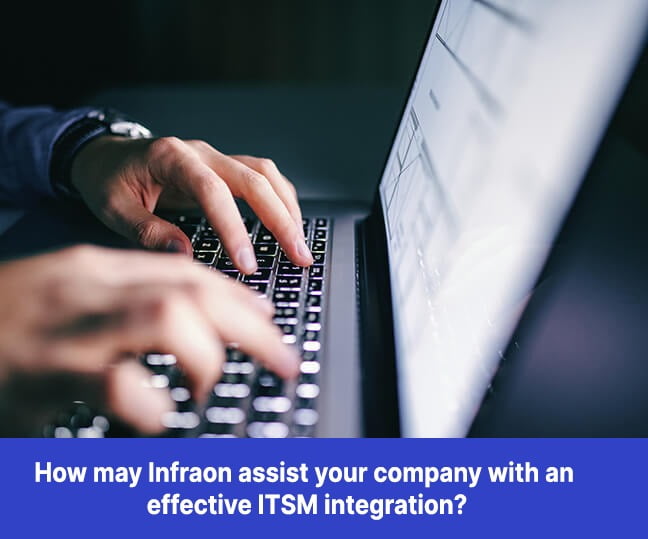Introduction
Effective IT Service Management (ITSM) is essential to ensure the seamless delivery of IT services that drive organizational success. Within ITSM, metrics play a pivotal role, serving as the compass that guides organizations toward operational excellence, continuous improvement, and informed decision-making. This blog explores the intricate world of ITSM metrics, highlighting their benefits, unveiling essential ITSM metrics, and emphasizing their strategic significance within IT Service Management.
Related blog: How to navigate the path to successful ITSM implementation
Benefits of ITSM Metrics
Performance Evaluation and Optimization
IT Service Management (ITSM) metrics play a pivotal role in the meticulous evaluation and optimization of various IT processes and services within an organization. These metrics provide a quantitative foundation that allows businesses to precisely gauge and analyze critical aspects of their IT operations.

Metrics such as response times, incident resolution rates, and service availability percentages serve as valuable indicators that offer insights into areas that demand refinement and enhancement. By quantifying these essential performance parameters, organizations can identify bottlenecks, inefficiencies, and areas of excellence, enabling them to streamline operations, allocate resources more effectively, and achieve higher levels of operational efficiency.
Data-Driven Decision-Making
In the contemporary landscape of data-driven decision-making, ITSM metrics emerge as the bedrock upon which informed strategic choices are built. These metrics serve as a comprehensive repository of data that empowers organizations to make well-founded decisions that significantly impact their overall efficiency and service quality. By harnessing the power of ITSM metrics, organizations can uncover hidden trends, discern intricate patterns, and extract meaningful insights from the vast sea of operational data. Armed with these insights, decision-makers can steer their strategies towards greater precision, aligning their efforts with the evolving needs and expectations of their clientele.
User-Centric Service Improvement
ITSM metrics provide organizations with a unique vantage point from which to view and enhance their services, placing the user experience at the forefront. Through a meticulous analysis of metrics associated with user satisfaction, adherence to service level agreements, and response times, businesses can gain a deep understanding of how their services are perceived and experienced by their users. These user-centric metrics serve as a compass guiding organizations toward tailoring their services to meet and exceed user expectations. By making data-backed adjustments, organizations can optimize their services to create seamless and gratifying user experiences, thereby fostering higher levels of customer satisfaction and loyalty.
Continuous Service Enhancement
The cyclical and iterative nature of ITSM metrics instills and nurtures a culture of perpetual improvement within organizations. By regularly monitoring, scrutinizing, and interpreting metrics, businesses can actively identify opportunities for innovation and enhancement across their IT landscape. These metrics function as an ever-evolving feedback mechanism, pinpointing areas that necessitate change and innovation. Armed with this feedback, organizations can implement targeted modifications, monitor their outcomes, and gauge the effectiveness of these adjustments over time. This dynamic cycle of improvement fosters agility, adaptability, and innovation, allowing organizations to remain at the forefront of industry developments and consistently elevate their service standards.
Essential ITSM Metrics: Measuring and Managing IT Services
Understanding and utilizing essential ITSM metrics is a cornerstone of effective IT service measurement and management. These metrics provide invaluable insights into the performance and quality of IT services, enabling organizations to make informed decisions and drive continuous improvement. Let’s delve deeper into some key ITSM metrics and explore their significance, along with specific examples:
Incident Volume
Incident volume is a critical metric that quantifies the total number of incidents reported over a specific period, such as a day, week, or month. This metric serves as a barometer of the workload and demand on the IT support team. By tracking incident volume, organizations can identify patterns of activity and potential stress points in their IT infrastructure. For instance, a sudden spike in incident volume could indicate an underlying technical issue or the release of a new software update. Armed with this information, organizations can allocate resources more effectively, ensure appropriate staffing levels during high-demand periods, and proactively address recurring issues.
First Call Resolution Rate

The First Call Resolution Rate measures the percentage of incidents that are successfully resolved during the initial interaction with the IT support team. A higher first-call resolution rate signifies a proficient and responsive support team that can swiftly diagnose and address user issues.
For example, if a user reports a software malfunction and the support team is able to guide them through troubleshooting steps that result in a prompt resolution, it contributes to a higher first-call resolution rate. This metric not only reflects the technical competency of the support team but also directly impacts user satisfaction by minimizing downtime and frustration.
Mean Time to Repair (MTTR)
Mean Time to Repair (MTTR) is a crucial metric that gauges the average time taken to restore services after an incident has occurred. It provides insights into the efficiency of incident management and the organization’s ability to mitigate service disruptions. For instance, if a network outage occurs and it takes three hours to fully restore connectivity, the MTTR for that incident would be three hours. Monitoring MTTR allows organizations to set realistic expectations for incident resolution, prioritize critical issues, and continuously refine their incident response processes to minimize downtime.
Change Success Rate
The Change Success Rate metric evaluates the percentage of changes that are implemented successfully without causing disruptions or incidents. A high change success rate signifies a well-structured and robust change management process. For example, if an organization introduces a new software update that seamlessly integrates with existing systems and user workflows, it contributes to a high change success rate. This metric not only showcases the organization’s ability to implement changes smoothly but also instills confidence in stakeholders that the IT environment remains stable and reliable.
Service Availability
Service availability is a fundamental metric that measures the percentage of time a specific IT service is accessible and operational. For instance, if an email service is available and functioning 99.9% of the time in a given month, it indicates a high level of reliability. Monitoring service availability is crucial for ensuring that critical services meet user expectations and contribute to uninterrupted business operations. Organizations can use this metric to identify potential bottlenecks, plan maintenance windows, and invest in redundancy measures to enhance overall service resilience.
Service Level Agreement (SLA) Adherence

SLA adherence measures how effectively an organization meets the commitments outlined in its Service Level Agreements. For instance, if an SLA stipulates that high-priority incidents must be resolved within four hours and the organization consistently achieves this target, it demonstrates a commitment to delivering services within agreed-upon parameters. High SLA adherence reinforces trust between IT and its stakeholders, showcasing reliability and accountability in meeting service expectations.
Mean Time Between Failures (MTBF)
Mean Time Between Failures (MTBF) measures the average time between two consecutive failures of a service or component. It provides insights into the reliability and stability of IT infrastructure. For example, if a server experiences a hardware failure, and after it’s fixed, it functions smoothly for an average of 120 days before the next failure occurs, the MTBF would be 120 days. Monitoring MTBF helps organizations identify and address recurring issues, plan maintenance schedules, and make informed decisions about hardware and software upgrades.
Change Failure Rate
The change Failure Rate calculates the percentage of changes that result in failures or incidents. This metric sheds light on the potential risks associated with changes to the IT environment. For instance, if a software update causes system crashes in 5 out of 100 instances, the change failure rate would be 5%. Monitoring this rate helps organizations evaluate the impact of changes, refine their change management processes, and minimize disruptions caused by unsuccessful changes.
Problem Resolution Efficiency
Problem Resolution Efficiency measures how efficiently the IT team identifies and resolves underlying problems that contribute to incidents. It evaluates the effectiveness of problem management processes in preventing the recurrence of incidents. For example, if a series of user-reported incidents related to slow application performance is traced back to a common network configuration issue and that issue is permanently resolved, it demonstrates a high problem resolution efficiency. Monitoring this metric enables organizations to proactively address root causes, reduce incident recurrence, and enhance overall system stability.
User Satisfaction Ratings

User satisfaction ratings provide a direct measure of user contentment with IT services. Organizations can gather feedback from users through surveys or feedback mechanisms to gauge their level of satisfaction. For example, if users consistently rate the helpdesk support as prompt, knowledgeable, and helpful, it indicates a positive user experience. These ratings offer insights into the effectiveness of IT services from the user’s perspective, enabling organizations to tailor their services to align with user preferences and needs. User-centric improvements driven by these metrics can lead to higher user engagement, loyalty, and overall satisfaction.
Capacity Utilization
Capacity Utilization assesses the extent to which IT resources (such as CPU, memory, and storage) are being utilized. It helps organizations understand whether their resources are underutilized, optimally utilized, or overburdened. For instance, if a server consistently operates at 90% CPU utilization during peak hours, it indicates a high level of resource usage. Monitoring capacity utilization enables organizations to allocate resources efficiently, plan for scalability, and avoid performance bottlenecks.
Customer Effort Score (CES)
Customer Effort Score (CES) measures the ease of interaction a customer experiences when seeking IT support or services. It gauges how much effort a user needs to put in to accomplish their tasks or resolve issues. For example, if users find it easy to submit support requests and receive timely resolutions, the CES would be high. Monitoring CES helps organizations identify areas where user interactions can be streamlined and simplified, leading to improved user satisfaction and a more positive overall user experience.
Mean Time to Detect (MTTD)
Mean Time to Detect (MTTD) measures the average time it takes to identify that an incident or problem has occurred. It highlights the organization’s ability to promptly detect issues and initiate incident management or problem resolution processes. For instance, if it takes an average of 30 minutes to detect a network outage, the MTTD for network-related incidents would be 30 minutes. Monitoring MTTD allows organizations to improve their monitoring and alerting systems, reducing the time it takes to respond to and address IT issues.
Change Lead Time
Change Lead Time measures the duration from the initiation of a change request to its successful implementation. It reflects the efficiency of the change management process in terms of planning, approval, and execution. For example, if it takes an average of 5 days to implement a software update after the change request is submitted, the change lead time for software updates would be 5 days. Monitoring this metric helps organizations streamline their change management workflows, reduce unnecessary delays, and enhance the agility of their IT operations.
Incident Resolution Time Distribution
Incident Resolution Time Distribution provides insights into how incident resolution times are distributed across different categories or severity levels. It helps organizations understand which types of incidents take longer to resolve and which ones are addressed more quickly. For instance, if high-priority incidents are consistently resolved within 2 hours, while medium-priority incidents take an average of 8 hours, it indicates a discrepancy in resolution times. Analyzing this distribution allows organizations to allocate resources effectively, prioritize improvements, and optimize incident response processes based on the criticality of issues.
Incorporating these ITSM metrics empowers organizations to make informed decisions, enhance user experiences, and continually refine their IT operations.
Related blog: The Ultimate Guide to ITSM Ticketing Systems in 2025
Conclusion
As outlined in this blog, ITSM metrics serve as invaluable tools, offering strategic insights that enhance decision-making, optimize IT services, and drive overall efficiency.
The adoption of ITSM metrics isn’t a mere option – it’s a strategic necessity in today’s technology-driven business landscape. By leveraging the insights derived from these metrics, organizations position themselves as leaders in delivering exceptional IT services, fostering innovation, and achieving unparalleled excellence.
As technology continues to evolve, reshaping industries and business dynamics, the significance of ITSM metrics remains steadfast. By harnessing these metrics, organizations can confidently navigate the challenges and opportunities of the digital age, ensuring their IT services remain at the forefront of delivering value and driving success.
The journey towards ITSM excellence starts with metrics – the navigational tools that lead organizations towards a future characterized by efficiency, effectiveness, and an unwavering dedication to delivering superior IT services


















